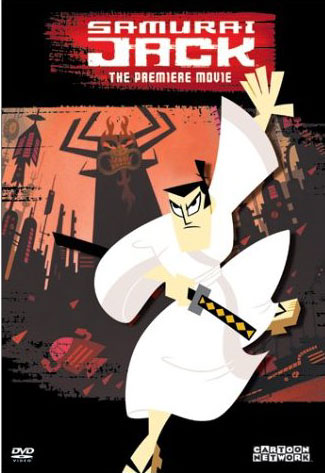Pilot: Welcome to Japan, folks. The local time is…tomorrow.
The Simpsons, Thirty Minutes Over TokyoIf you want to know what Japan is like architecturally, go watch Samurai Jack cartoons. The future world created by Genndy Tartakovsky looks a lot like present day Japan.
I picked some photos of buildings to give you a general idea of what I have seen. Here’s a Habitrails-inspired otaku-infested electronics shop in Akihabara.
Here’s a very elegant Stalinist-style skyscraper somewhere in Tokyo.
Philippe Starck blemished Tokyo skyline with a giant golden turd on the top of Asahi Beer Hall. It’s supposed to symbolize a flame that in turn is supposed to symbolize the company spirit of Asahi. Giggling tourists take a lot of pictures with creative shot framing. By the way, I’ve tried a lot of different beers that Asahi makes, and they all taste like, uh, flame. I, personally like Sapporo much better.
The Japanese society is highly stratified. For instance, in the hotel complex where I was staying there were at least 5 different classes of buildings (each of a different prestige level) and the ANA plane in which I travelled also had 4 or 5 types of seating. On this picture you can see two layers of Japanese society: well-designed plastic huts built by homeless with a backdrop of what I’m told is company-provided employee dorms.
Here’s an amazingly eclectic little building (I think it’s a firehouse). It combines elements of Art Deco, Modernism and traditional Japanese architecture.
And this building is pretty typical of modern designs. I love the huge wrap-around windows, the dna-like staircase and the efficient use of space.
I was most shocked by architecture in Kyoto’s Gion, the geisha district. Near all-traditional Japanese buildings there was a number of super-futuristic mostly metal buildings that looked like spaceships. I think they were nightclubs of some sort. I’ve never seen anything like this anywhere else.
Many building tops had antenna clusters, one more cyber-punkey than the other.
As we all know, land is pretty tight in Japan. Here’s a pretty typical small house somewhere in Kamakura (I think).
What makes construction in such tight quarters possible is this marvel of technology: a cute pocket-sized excavator.











